
Station Name: HAILSHAM
|
| Date opened: | 15.5.1849 |
| Location: | On the south side of South Road (Lindfield Drive now lies on the station site) and west of Station Road. |
| Company on opening: | London Brighton & South Coast Railway |
| Date closed to passengers: | 9.9.1968 |
| Date closed completely: | 9.9.1968 |
| Company on closing: | British Railways (Southern Region) |
| Present state: | All evidence of the station was cleared away during the construction of Lindfield Drive. The Terminus pub in Station Road indcates that Hailsham was once a terminus. |
| County: | Sussex |
| OS Grid Ref: | TQ589093 |
| Date of visit: | June 1968, June 1975, May 1976, September 1982 & June 2005 |
BRIEF HISTORY OF EASTBOURNE
- TUNBRIDGE WELLS (CUCKOO) LINE
The 7 1/2 miles of single track was opened between Hailsham and Heathfield on 5th April 1880 and the 9 3/4 miles on to Eridge on 1st September that year. At Redgate Junction, south of Eridge it joined the route from Uckfield to Groombridge and both lines ran in parallel to Tunbridge Wells and to London via the Oxted line. When the Uckfield line was doubled in 1894 the Heathfield line north of Redgate Junction became the down line. The name `Cuckoo' was adopted by the railwaymen themselves. This relates to the old Sussex legend that on the 14th April annually the first cuckoo of summer is released at Heathfield Fair.
By 1925 the single track spur from Tunbridge Wells West to Central was little used with four daily trains to Brighton and two to Uckfield. Three of these carried through carriages for the Cuckoo line which were detached at Eridge. By the 1950's this had improved and in 1956, 58 passenger trains and two freights used the spur making it, for that year, the busiest section of single track in the country. The main goods stations on the Cuckoo line were at Heathfield and Hailsham, the other stations handled little more than the occasional wagon of coal.
The Cuckoo line was closed to passengers north
of Hailsham on 14th June 1965. Freight
Once again there were strong objections but these were outweighed by British Rail's cost argument. They estimated that to upgrade the infrastructure, while retaining the existing services, would give a £175,000 loss per year and the Secretary of State confirmed closure of the line on 6th July 1985. Grove Junction was removed the day after closure but the line from Eridge to Tunbridge Wells remained in use until 10th August 1985 when the depot was closed.
The Spa Valley Railway now runs for 3 1/2 miles to a new station at Groombridge with an intermediate station at High Rocks built by the owner of the High Rocks Inn and Restaurant. Between 1992 - 1994 the section of line between Polegate and
Heathfield was reopened by the county council as a footpath
and cycleway known as the Cuckoo
Trail. There are proposals to extend northwards from Heathfield
and as part of this extension Heathfield Tunnel has been restored
and lit and the 'Millennium Gates' fitted to the south portal.
To see the other stations on the Eastbourne - Tunbridge Wells West line click on the station name: Tunbridge Wells West, High Rocks Halt, Groombridge, Eridge, Rotherfield & Mark Cross, Mayfield, Heathfield, Horam, Hellingly, Polegate, Hampden Park & Eastbourne |
1.jpg)
Hailsham Station in the early 20th century
Copyright photo from John Alsop collection


1899 1:2,500 OS map.
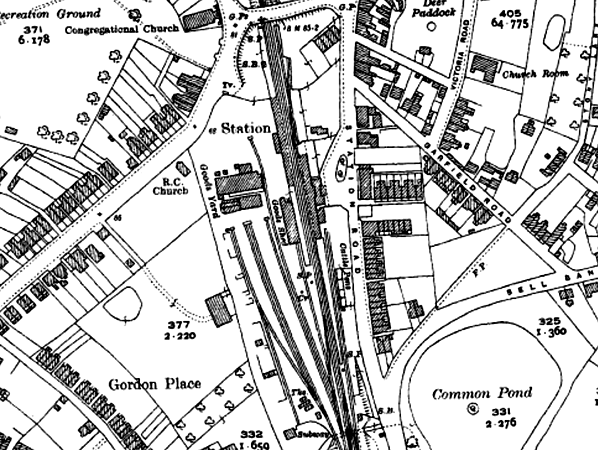
1928 1:2,500 OS map. There were two docks, a cattle dock is shown on the down side to the south of the station. There is another dock, also on the down side but to the north of the station.
3.jpg)
Hailsham
Station looking south before September 1906. Note the goods dock on the left, this was not the cattle dock which was on the down side to the south if the station building.
Copyright
photo from John
Alsop collection
6.jpg)
Hailsham Station in April 1962
4.jpg)
Hailsham station looking south
in 1963
Photo by A J Wills
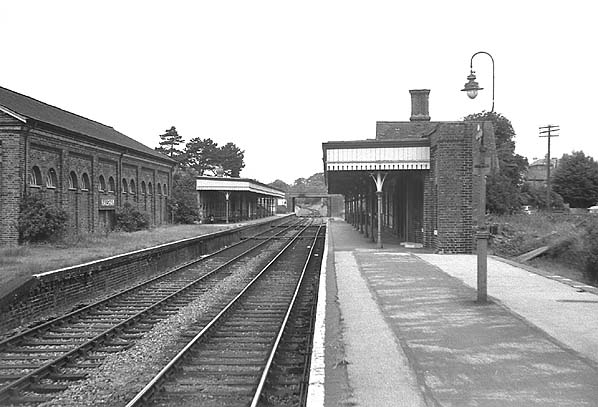
Hailsham
station looking north in June 1968
Photo
by Nick Catford
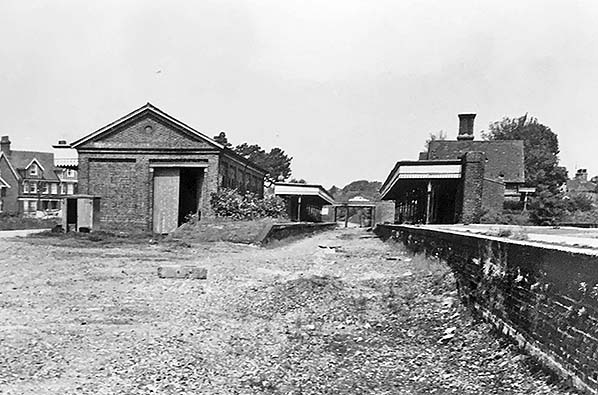 Hailsham station looking north c1969 shortly after the track has been lifted
Hailsham station looking north c1969 shortly after the track has been lifted
Photo from Bob Battle collection
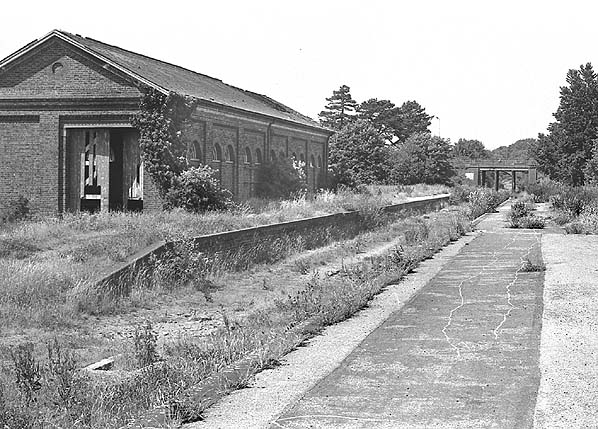
Hailsham Station and goods shed looking north in June 1975
Photo by Nick Catford
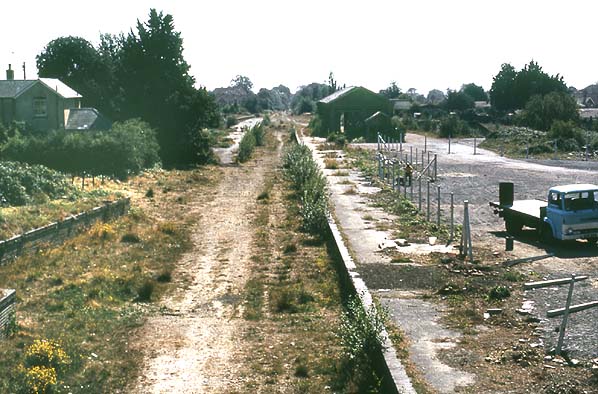
Hailsham Station
looking south in May 1975. Same viewpoint as the top picture.
Photo by Nick Catford

The site of Hailsham Station looking north in June 2005
Photo by Nick Catford

Hailsham station
looking south in April 2013. The house above the red mini is also seen in
the 1975 picture above.
Photo by Malcolm Court
Click here for more pictures of Hailsham Station
CLICK
HERE
FOR A FULL LIST OF LINES AND STATIONS SERVING
TUNBRIDGE WELLS WEST

|
 Home
Page
Home
Page
| Last updated: Tuesday, 04-Jan-2022 13:21:35 CET |
© 1998-2013 Disused Stations
|







